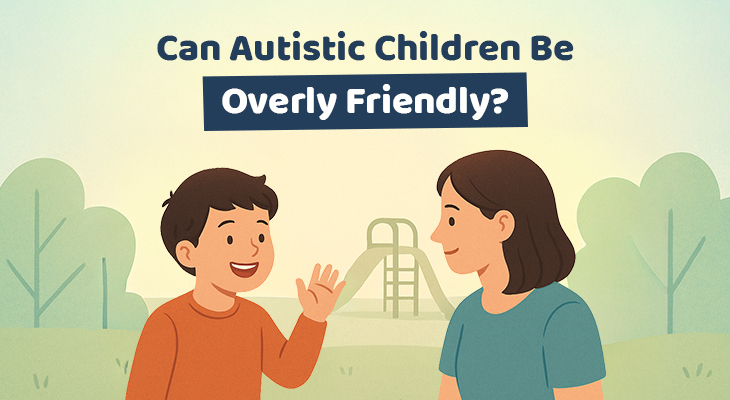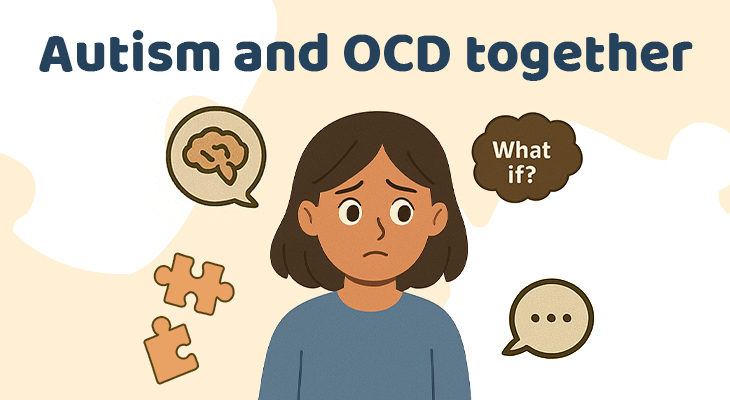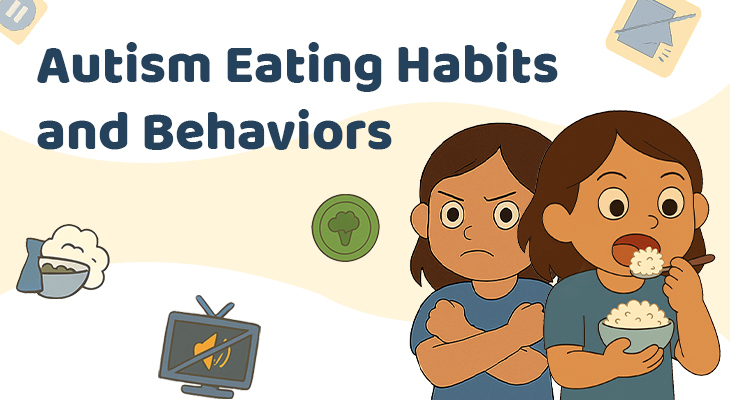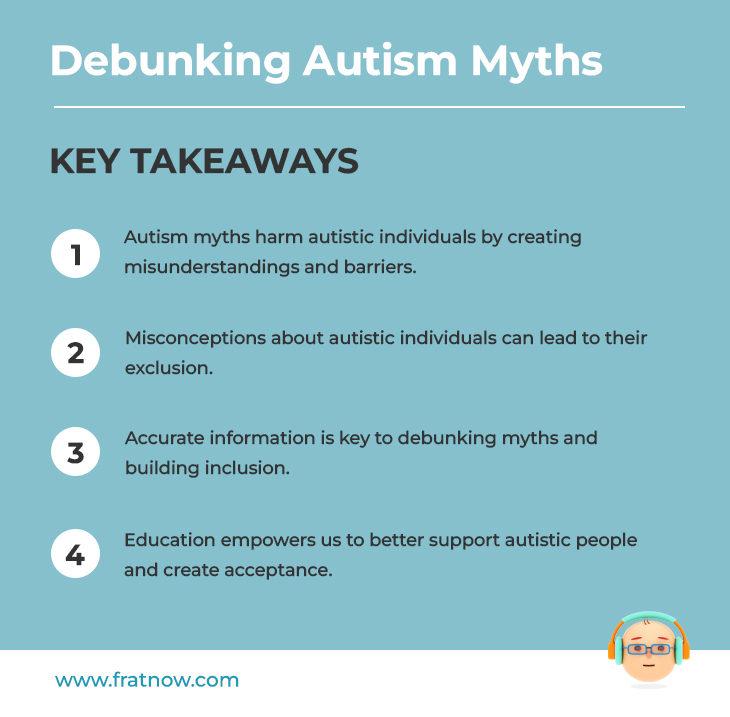
Download Download & share this Knowledge card in your network [Free Download]
Introduction
Myths can be harmful, forming wrong beliefs and leading to misunderstandings. In everyday life, they may not always cause much damage, but when it comes to autism, these myths can take away support and create barriers.
Autism diagnosis can trigger tough questions and difficult emotions. There’s so much to learn, it can be hard to know where to start. Misconceptions only add to the confusion, shaping perceptions that may not reflect the true experiences of autistic individuals. Many people believe things about autism that aren’t true, affecting how autistic individuals are treated. It’s important to clear up these false ideas and understand the reality.
For instance, the myth that autistic people don’t seek friendships can lead to them being excluded or ignored, when in reality, they just communicate or connect in different ways. Similarly, assuming all autistic individuals have the same abilities can result in unrealistic expectations or overlooked potential. These misconceptions shape how society views autism, often making life harder for those who are already navigating a world that isn’t built for them.
This blog aims to debunk common myths around autism, thereby providing accurate information to foster better understanding and awareness.
Table of Contents
- Introduction
- Benefits of dispelling misconceptions
- Myth 1: There is only one test to detect autism
- Myth 2: Only boys have autism
- Myth 3: Autistic individuals don’t lead fulfilling, purposeful lives
- Myth 4: Bad parenting causes autism
- Myth 5: Autistic people are violent
- Myth 6: People with autism don’t have emotions
- Myth 7: People with autism are all geniuses
- Myth 8: Autism is more common in white children
- How does FRAT® help?
- Did You Know
- Conclusion
- References
Benefits of dispelling misconceptions
Historically, misconceptions about autism have led to significant challenges for autistic individuals, including misdiagnosis and lack of support. In recent years, increased awareness and improved understanding have contributed to a rise in autism diagnoses. For instance, in the United States, autism prevalence has increased from 1 in 150 children in 2000 to 1 in 36 children in 2020. [5]
This increase reflects better recognition and dispelling of myths. As awareness grows and misconceptions are challenged, more individuals who were previously undiagnosed will now get identified, highlighting the importance of dispelling myths & misconceptions.
While there are many autism myths that exist, it is unlikely that we will uncover all of them. In this blog, we aim to debunk the most common myths that we have encountered.
Myth 1: There is only one test to detect autism
Reality: Unlike conditions like a fractured bone, which can be confirmed with a single X-ray, autism diagnosis is a complex process that requires multiple assessments.
Autism is a neurodevelopmental condition, meaning it does not present as a single physical abnormality but rather as differences in brain function and behavior. Since these differences vary from person to person, doctors rely on behavioral assessments, developmental history, and input from multiple specialists. There is no single medical test, such as a scan or lab test, that can confirm autism, making early observations and expert evaluations crucial for an accurate diagnosis.
Understanding the process of autism diagnosis can be complex, however, we have compiled a comprehensive blog that outlines the essential tests and biomarkers that should not be overlooked. Please read our blog, “Complete guide to autism tests”, to learn more.
Myth 2: Only boys have autism
Reality: While autism is diagnosed more often in boys, girls are also autistic but are more likely to be misdiagnosed or diagnosed later in life due to diagnostic bias.
Diagnostic bias refers to the unintentional delay or misleading diagnosis by physicians. Traditional diagnostic criteria have predominantly been based on how autism is present in boys, which has resulted in a disadvantage for girls. For instance, repetitive behaviors are often viewed as indicative of autism. But research from Stanford University highlights that girls with autism tend to show fewer repetitive behaviors and are more likely to engage in social masking or mimicking social behaviors to blend in, making their symptoms less obvious. This diagnostic bias leads to many autistic girls being overlooked or mistakenly diagnosed with other conditions like anxiety or ADHD.
Studies suggest that boys are diagnosed with autism at a ratio of about 4:1 compared to girls. However, this gap is narrowing as awareness increases.
We recommend you reading our blog titled, “Understanding autism in girls v/s boys” for a complete understanding on the why & how of boys being diagnosed more than girls.
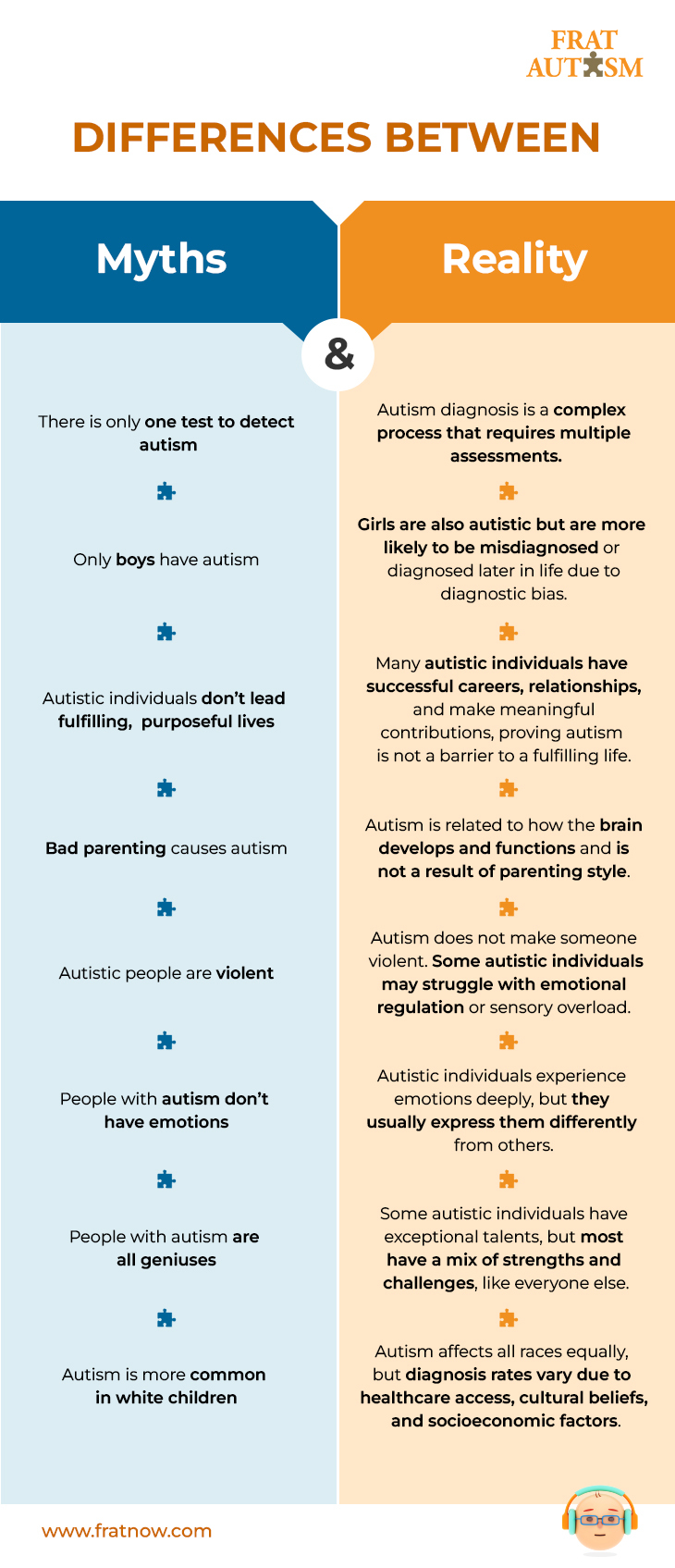
Download Download & share this infograph card in your network [Free Download]
Myth 3: Autistic individuals don’t lead fulfilling, purposeful lives
Reality: Many autistic individuals build careers, relationships, and have made significant contributions across various fields, demonstrating that autism is not always a barrier to a meaningful and impactful life.
This is especially true for those diagnosed with Autism Level 3. They require substantial support in various areas of life, as they face challenges in daily activities, communication and social interaction. However, those with Autism level 1 can function independently with minimal support. Recognizing these levels helps better understand and support individual needs. Read our blog titled “Navigating the Spectrum: The 3 Autism Levels” Explained to understand levels of autism more clearly.
For instance, renowned actor Sir Anthony Hopkins, diagnosed with autism, has earned multiple Academy Awards for his outstanding performances. Temple Grandin, an autistic scientist, revolutionized animal welfare in the livestock industry. These examples highlight that autistic individuals can and do lead fulfilling lives, excelling in their passions and making valuable societal contributions.
Myth 4: Bad parenting causes autism
Reality: Autism is a neurodevelopmental condition, meaning it is related to how the brain develops and functions and not a result of parenting style.
For instance, an autistic child’s meltdowns are not a result of parenting style but stem from how their brain develops and responds to the situation around them.
Myth 5: Autistic people are violent
Reality: Autism does not make someone violent. Some autistic individuals may struggle with emotional regulation or sensory overload. These challenges do not equate to aggression or intent to harm others.
There are no studies or evidence that proves autistic individuals are more likely to be violent. In fact, caregivers make conscious efforts to prevent any situations that could trigger distress. For example, if a child is hypersensitive to loud noise, the parents might choose to skip a birthday party to ensure child comfort. Most autistic individuals prefer to avoid situations that heighten their anxiety or distress, making aggression rare.
Myth 6: People with autism don’t have emotions
Reality: Autistic individuals experience emotions deeply, but they usually express them differently from others. The misconception often arises because their emotional responses may not align with conventional social cues.
For example, an autistic person might not express excitement through facial expressions but may show it through repetitive movements or intense focus on a topic they love. Their emotions could be expressed through alternative means such as gestures, artwork, or written communication. Non-verbal cues, such as facial expressions, tone of voice, and body language, might be less conventional or easily misunderstood. This difference in emotional expression does not mean a lack of feeling, it simply means emotions are processed and displayed uniquely.
Myth 7: People with autism are all geniuses
Reality: While some autistic individuals have extraordinary abilities in specific areas, the majority have a mix of strengths and challenges, just like neurotypical individuals.
The stereotype that all autistic people are geniuses comes largely from media portrayals. When an autistic individual possesses extraordinary skills, it is called Savant Syndrome. Research indicates that approximately 10% of autistic children exhibit savant abilities. If you know someone who holds this misconception, encourage them to read our blog, “Savant Syndrome and Autism,” which explains the concept of savant syndrome and extraordinary skills in autistic individuals in detail.
Myth 8: Autism is more common in white children
Reality: Autism exists across all races and ethnicities, but differences in diagnosis rates stem from disparities in healthcare access, cultural perceptions, and socioeconomic factors rather than actual prevalence.
For example, in many Eastern cultures, avoiding direct eye contact is seen as a sign of respect or shyness. This cultural norm sometimes leads to missed or delayed autism diagnosis.
These are just a few of the most common myths about autism, but there are many more misconceptions out there. If you come across any specific opinions or doubts on any topic, our website has plenty of reliable resources that provide accurate information.
How does FRAT® help?
If you have read this far, chances are you may have believed in one or more of these myths. But now that you know the reality, you might start seeing autistic individuals in a new light. Awareness is the first step toward change, and you can play a role in spreading the right information. Share what you have learned with those around you teachers, parents, neighbors, and your community to help break these misconceptions and foster a more inclusive world.
There’s also an important fact that many people are unaware of, not a myth, but a crucial piece of information. A significant number of autistic children also have Cerebral Folate Deficiency (CFD) due to Folate Receptor Autoantibodies (FRAAs). This condition can impact brain function, and early detection can be life-changing. So if you ever come across someone with autism, let them know about Cerebral Folate Deficiency and how the FRAT test can help.
Conclusion
Debunking the misconceptions about autism is crucial for fostering a more inclusive and understanding society. Educating others, whether through resources like blogs or spreading the word about key facts, empowers us to support those with autism better and make the world a more accepting place.
We hope this blog has helped clear some of the most common misconceptions about autism and provided a clear understanding of the condition. Do share this blog with others to spread awareness.
References
- https://autism.fratnow.com/blog/complete-guide-to-autism-tests/
- https://autism.fratnow.com/blog/understanding-autism-in-girls-vs-boys/
- https://autism.fratnow.com/blog/savant-syndrome-and-autism/
- https://autism.fratnow.com/blog/navigating-autism-spectrum-3-autism-levels/
- https://www.cdc.gov/autism/data-research/index.html
- https://www.cdc.gov/autism/publications/autism-among-4-year-old-8-year-old-children-an-easy-read-summary.html
- https://beaminghealth.com/article/15-autism-myths-that-should-be-debunked
- https://www.abtaba.com/blog/autism-myths-stereotypes
- https://www.autismspecialtygroup.com/blog/2024/3/11/debunking-common-myths-about-autism



